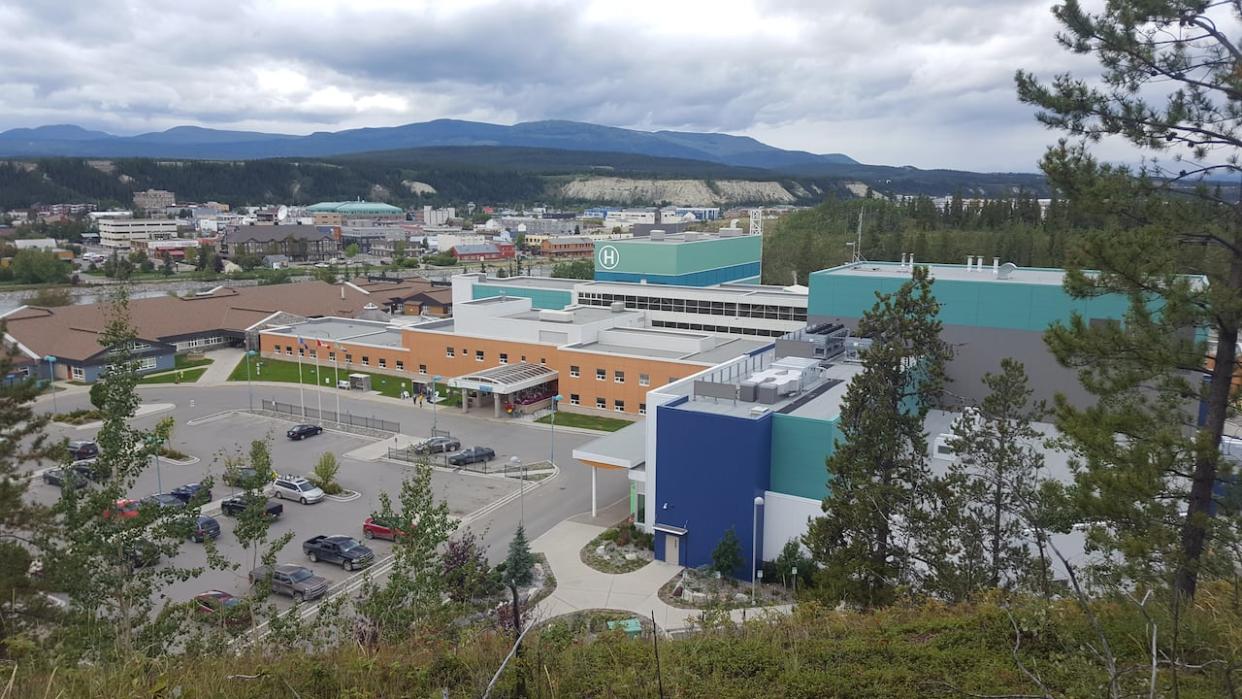Whitehorse hospital patients being treated in offices, hallways during latest capacity surge

The Whitehorse General Hospital is experiencing another capacity surge.
A bulletin posted to the Yukon Hospital Corporation website Thursday says the Whitehorse hospital is in the "red" zone for unusually high demand in services and extremely limited space. It warns of service delays and longer wait times.
An internal memo to hospital staff issued Wednesday describes the hospital's current state of overload.
There were 19 patients without a bed as of that morning, the memo says.
"We are now utilizing non-traditional spaces such as offices, hallways and meeting rooms for patient care," the memo reads. "This is not ideal, but necessary to address urgent needs."
The memo advises that non-traditional spaces will continue to house patients until the end of this month, at least, when more space comes available at the Thomson Centre. Some patients might be transferred to the hospital in Dawson City.
It says the hospital corporation is looking to EMS to potentially assist with staffing shortages. Scheduled, non-urgent surgeries that require admission to hospital have been deferred for the rest of the week, and there may be further cancellations to maintain space for emergencies.
The public is being urged to use the Whitehorse walk-in clinic for non-emergencies. Urgent care should not be avoided, however, and people should continue to come to hospital or dial 9-1-1 in an emergency.
A COVID-19 outbreak was also declared in the hospital's medical unit earlier this week. Dr. Sudit Ranade, the chief medical officer, has advised that visitors should wear masks and wash hands before visiting. People with COVID-19 symptoms are asked not to visit at this time; while elderly and immunocompromised people are advised to visit with caution.
Some patients moving to Whistle Bend Place
Next week, some long-term care and hospice patients will be moved from the Thomson Centre to Whistle Bend Place. The Thomson Centre is a 49-room extended care facility attached to the hospital.
The shuffle will make five additional beds available in the centre, to be used for acute care. The Yukon government and hospital corporation announced the change on Monday as a temporary, partial solution to the hospital's capacity issues.
"This is really going to help the disruptions that we're seeing in the surgical services department, particularly," said Jessica Apolloni, a hospital corporation spokesperson, in a phone interview on Tuesday.
Apolloni said there will be a separate care team assigned to the five acute care beds in the Thomson Centre. The first day of care there is tentatively scheduled for July 29.
At Whistle Bend Place, 12 new long-term care rooms have been remodelled from "unoccupied space," according to the Yukon government. A spokesperson told CBC in an email that minor renovations created the new rooms, and there won't be any changes to common spaces or the currently occupied houses at Whistle Bend Place.
Hospital system needs a capacity overhaul: Kmet
The five new beds in the Thomson Centre are a "critical first step," said Alex Kmet, president of the Yukon Medical Association.
However, Kmet said the hospital needs to be redeveloped to meet patient demand.
Kmet, who works at the hospital, has watched the capacity crisis worsen incrementally with population growth. In recent weeks, he has seen patients receiving care on stretchers in meeting rooms; people with broken bones fitted with casts in the back hall of the emergency room, which does not have a cast clinic; and a number of scheduled surgeries cancelled for lack of space and staff.
In 1997, the hospital received its last substantial renovation. It was outfitted with 55 beds to serve the city's then-population of 19,157 people. Now, there are about 36,000 Whitehorse residents — almost double — but the hospital still has only 55 beds.
The population is expected to double again by 2045.
"The really big step that needs to be taken is looking at redeveloping the capacity of our hospital system," Kmet said. If planning, funding, and redeveloping a hospital reasonably takes five to 10 years, that work needs to start soon.
"We're really hoping to find ways to help people understand the critical importance of that," Kmet said.


